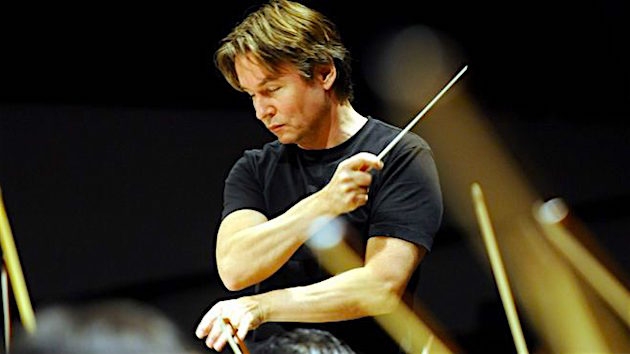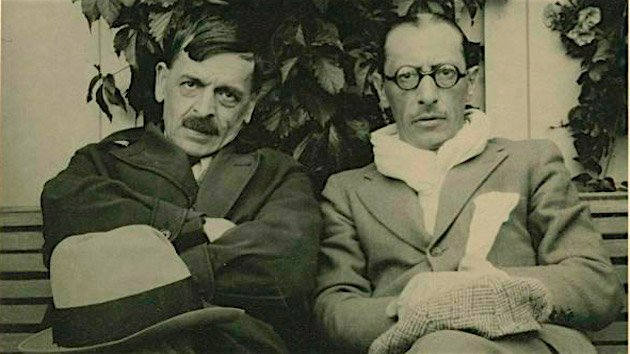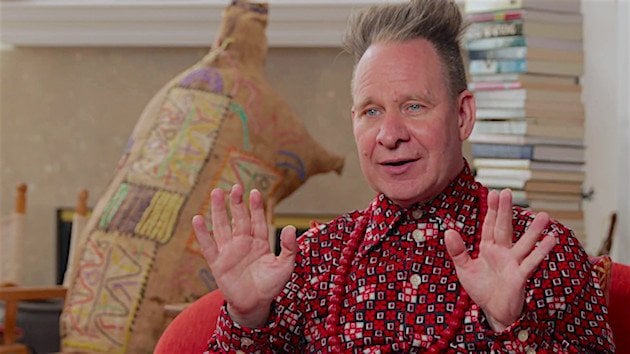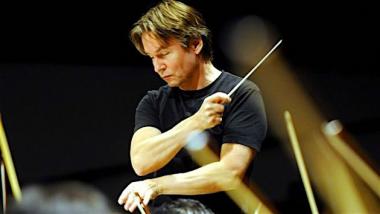
Three very different interpretations of Igor Stravinsky’s neglected 1934 ballet/oratorio, Persèphone, took place simultaneously Saturday on stage at the Walt Disney Concert Hall.
The first was literal — an exquisitely defined, poetically atmospheric rendition of the composer’s neoclassical score conducted by Esa-Pekka Salonen, who led the combined forces of the Los Angeles Philharmonic, the L.A. Master Chorale, the L.A. Children’s Chorus, and tenor soloist Paul Groves, all accentuated by the impeccable French of Cécilia Tsan narrating the drama.
The second interpretation was a form of international transliteration as the Homeric account of Persephone’s abduction and subjugation in the underworld was transformed into a ritualized Cambodian dance drama. Through an ebbing and flowing choreography of abstract lines and intertwining bodies, the story was dramatized by four members of the Phnom Penh-based Amrita Performing Arts, Cambodia.
The third overlay was director Peter Sellars’s own historical interpretation (which he detailed for SFCV in an interview). To him, Persephone’s compassion for the souls condemned to dwell in the underworld is a reflection of Stravinsky’s personal sadness over the plight of his homeland under the repressive purges of Joseph Stalin. “Hell turns out to be a Russian village,” Sellars writes, “emptied of people who have been assassinated or imprisoned.” Sellars admits he has no historical evidence to substantiate this interpretation but feels it is clearly stated in the lamenting nature of the music.

That feels like a stretch and, in any case, reading biographical connections into a work of music is highly speculative. Fortunately, little of Sellars’s take had a direct impact on the performance, except for the implied relationship between the Russian gulags and the experiences of the Cambodian dancers, whose parents suffered through the horrors of Pol Pot and the “killing fields.” Sellars’s decision to include them, however he arrived at it, was a stroke of genius. They added an element of storytelling that is ritualized and beautifully congruent with the music.
A period of 21 years separates Persèphone, with its quiet, delicately detailed score from The Rite of Spring’s violent eruptions. Expecting the lustful pyrotechnics of Stravinsky’s greatest hit, audiences and critics dismissed the ballet as a minor work Persèphone has since survived mostly through recordings. The first LA Phil performance was in January 1963, conducted by Zubin Mehta.
The score has had an outspoken champion in Peter Sellars, who first staged his incarnation of the ballet in 2012, in Madrid, featuring the same quartet of Cambodian dancers. As the Philharmonic performance ably demonstrated, it is one of those rare works that actually does qualify as an overlooked masterpiece.

The ballet begins with a joyous celebration as the women of the chorus praise nature in all its glory and Demeter, goddess of the harvest (danced by Chumvan Sodhachivy), and her daughter, Persephone (Sam Sathya). Paired flutes and a piccolo sing forth in bird-like jubilation against a landscape of low strings as the chorus describes flowers of every kind ripe with their life-giving pollen.
Unbeknownst to them, Zeus has agreed to let his brother seduce Persephone (with the hallucinogenic pollen of a narcissus), rape her, and drag her down to his realm.
At this point, Stravinsky’s pastoral idyll turns ominous, more percussive, and violent as Hades, (Khon Chan Sithyka) in the guise of Hanuman the Monkey God, makes his entrance and abducts Persephone.
Deep strings, with occasional calls from the brass and winds, depict the underworld, a realm of shadows and endless sorrow. When Persephone awakens, she is moved by the fate of the dead and wishes to relieve their suffering, even as she sees herself doomed to live forever in the shadows and gloom. Her salvation arrives in the form of Mercury (Nam Narim), bearing a precious pomegranate, whose juice will restore Persephone’s memories of earthly pleasure. Awakened from her trance, she sees that the world above has sunken into endless winter, her mother searching for her lost daughter. With the aid of Mercury, she returns to the surface bringing with her the spring and a renewed radiance in the orchestration.
Filled with joy upon her return, Persephone falls in love with the handsome Triptolème, who vows to teach the people how to till the soil to bring forth crops. But the somber atmosphere returns when Persephone tells of her vow to return for half the year to the underworld and her husband. In keeping with the weekend’s Easter celebration, this action has a Christian parallel, as the life-giving seed must die in order to rise again in splendor.
Throughout this mesmerizing performance, Salonen emphasized the atmospheric variations and delicacy of Stravinsky’s spare orchestration that relies on small concerto-grosso style groupings of instruments to speak volumes.
The elegantly stylized choreography added a totally unique level of illumination to the story. In the end it all came together in a bounty of harmonious singing by the adult and children’s choruses, Groves’s impressive Homeric recitation, and the nuanced French narration by Tsan. It was a performance that transformed Disney Hall into a realm of magical enchantment.
Oddly, the work that opened the program, Stravinsky’s 1947 dance piece, Orpheus, was a completely different musical experience. Not in keeping with Salonen’s affinity for Stravinsky, it was tepid, bloodless, and lacking in vitality.




